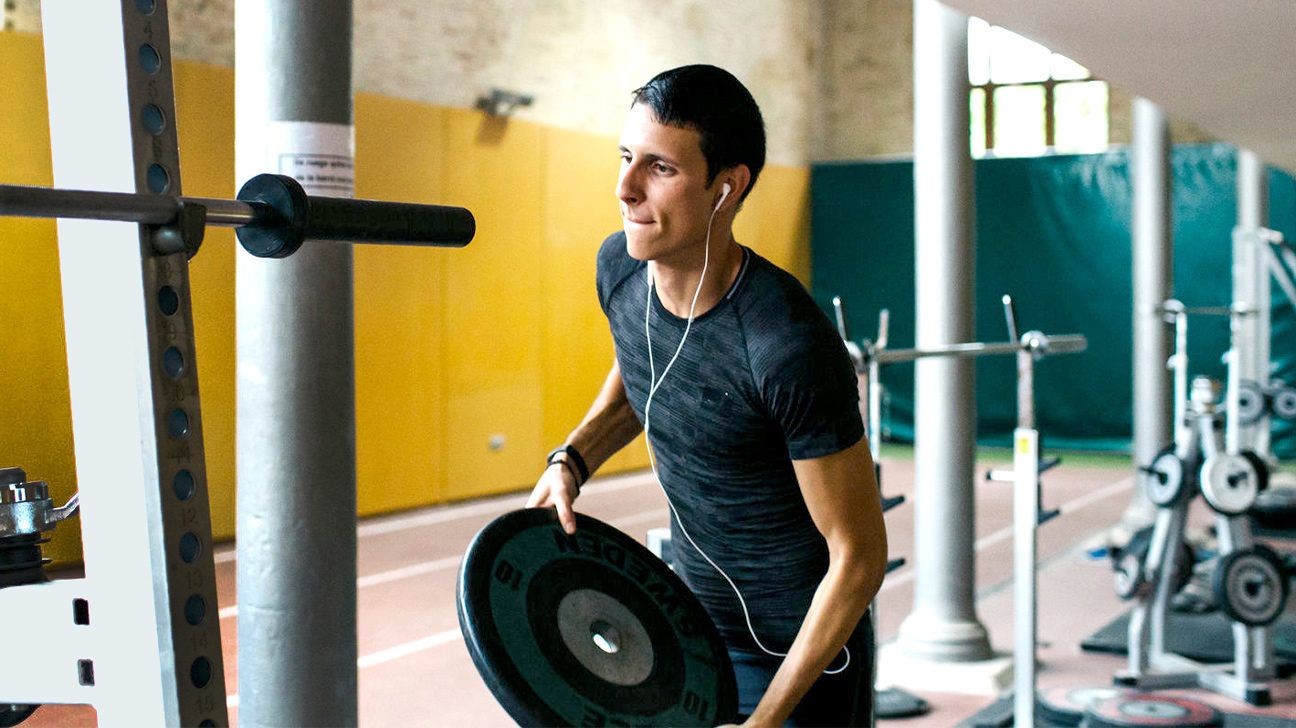So you’ve been hitting the gym, taking classes, or doing bodyweight workouts for a while now, and a lot of the moves you’ve been doing seem easy.
You’re grabbing the 3-pound weights you use in barre class to do curls while weight training when you could easily lift 10-pounders. Or maybe you’ve been going to strength training classes for 6 weeks, but you’re still picking up the same kettlebells from day one.
Your muscles aren’t growing anymore, and you’re not seeing any changes in your body. The likely culprit of your slowed progress is a plateau because you’re not lifting enough weight. So, how do you know how much weight you can actually lift?
First, let’s get one thing straight: You’re not going to bulk up overnight. While some people would love to hear that increasing the amount of weight will get you ripped and jacked, others fear this outcome.
Regardless, this won’t happen. Bodybuilders and gym rats spend hours, weeks, and months focusing on growing their bodies and strengthening their muscles to look a certain way, explains Rob Sulaver, founder and CEO of Bandana Training.
The reality is this: Lifting weights will challenge and change your body for the better over time. There are loads of benefits to a consistent strength training program (if you’re curious, we’ve listed at least 19 here).
Here’s a quick recap of the recent research. Lifting weights may reduce your waist circumference, if that’s something you’re into.
The way you lift heavier weights (the amount you increase by, the exercises you’re doing, the rep scheme you’re following) can help tailor the results. Here are some key points to remember before you start busting out those reps.
Determining the right weight depends on what workout you’re doing — whether it’s something you’ve been doing for a while or it’s brand new to you. If you’ve never done an exercise before, Sulaver recommends a warmup self-assessment.
“Start with 50 percent less than what you might expect to lift, and do a few reps with that,” he says. For example, if you normally lift 20-pound weights, start with 10s.
“That should feel easy, so really make sure your form is spot-on. Then gradually work your way up in weight, doing a few reps at a time,” Sulaver suggests.
Once you hit a weight that feels challenging, where you need to slow down to complete your reps with good form, use that for your first set.
Bonus: Not only do you now have a good idea of the weight you should use, but you’re also warmed up for your first set.
If you’re more experienced with dumbbells, kettlebells, or a barbell, the question is when and how to add more weight.
So, if you’re ready to add more weight, take a look at (1) the speed of the lift, (2) your form, and (3) how you feel after you complete your sets, Sulaver suggests. Those are good indications of whether you should be going heavier.
“If your last couple reps are slow and uber-strenuous, leaving you sweaty and short of breath, then you’re using the right weight,” he says. “If you’re performing the last couple reps easily at normal speed, you could probably go heavier.”
When we say that it’s time to up the numbers, we’re not talking humongous increases.
If you’re over here thinking you need to lift the weight of a bus, take heart. A 2019 study found that as long as you lift until “failure” (as in, total muscle fatigue), it really doesn’t matter how much weight you’re lifting.
However, if you want to see gains and create that lean yet strong physique, you can’t push the same weight week in and week out and expect not to plateau. Sulaver recommends adding weight every week.
“But in baby steps — sometimes it’s only 2.5 percent heavier than the prior week,” he says. There’s a balance between pushing yourself and listening to your body’s limits that you’ll be able to find as you start lifting more.
There comes a point where light weights and high reps just becomes a waste of your time, Sulaver explains. “The only thing you get good at when you’re lifting 2 to 3 pounds for hundreds of reps is lifting 2 to 3 pounds for hundreds of reps,” he says.
“If you want to be good at that, then it’s a smart thing to do.” But if you’re looking for more of a challenge — and change in your body — follow the tips above.


